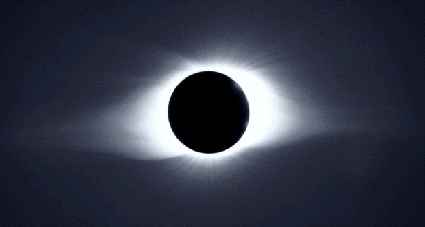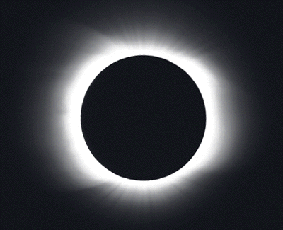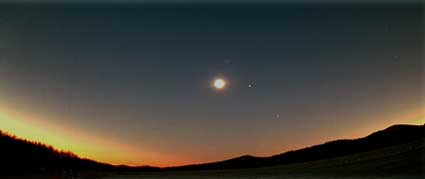|
The SOHO spacecraft currently supplies daily images of the solar corona at 1.1-3, 2-6 and 4-30 solar radii. Are ground-based solar corona observations during total solar eclipses have becoming obsolete nowadays? A quick view of SOHO data shows that it is not perfect in some respects. There are, for example, no polarization measurements giving valuable information on the 3D structure of the solar corona ( Molodensky et al., Pis'ma v Astronomicheskii Zhurnal, Vol.23, N12, 1997 ). And this is probably one of the most important issues not only for solar physics but also for the study of solar-terrestrial relations and interaction of the Earth's magnetosphere with the solar wind. On March 9, 1997 an expedition has been organized by the Russian Academy of Sciences to the Baikal region in Siberia for observation of the total solar eclipse. A group of researchers from IZMIRAN headed by Dr. M.Molodensky also included L.Starkova, V.Koutvitsky, Yu.Platov and B.Filippov. The observations were aimed at the solar corona polarization measurements as well as corona structure determination at large distances from the Sun up to 7 SR. The obtained images have been scanned and digitally processed. Our data give a clear picture with many fine details as well as polarization information. Thus, main task of the expedition has been fulfilled and the results are shown in Fig. 1-3.

Fig. 1. Lens: F = 1m, D = 170 mm

Fig. 2. Lens: F = 2m, D = 150 mm

Fig. 3. Lens: F = 30mm, D = 10mm
Fig. 4. SOHO data, 6 SR
Acknowledgments: | |
|
| |